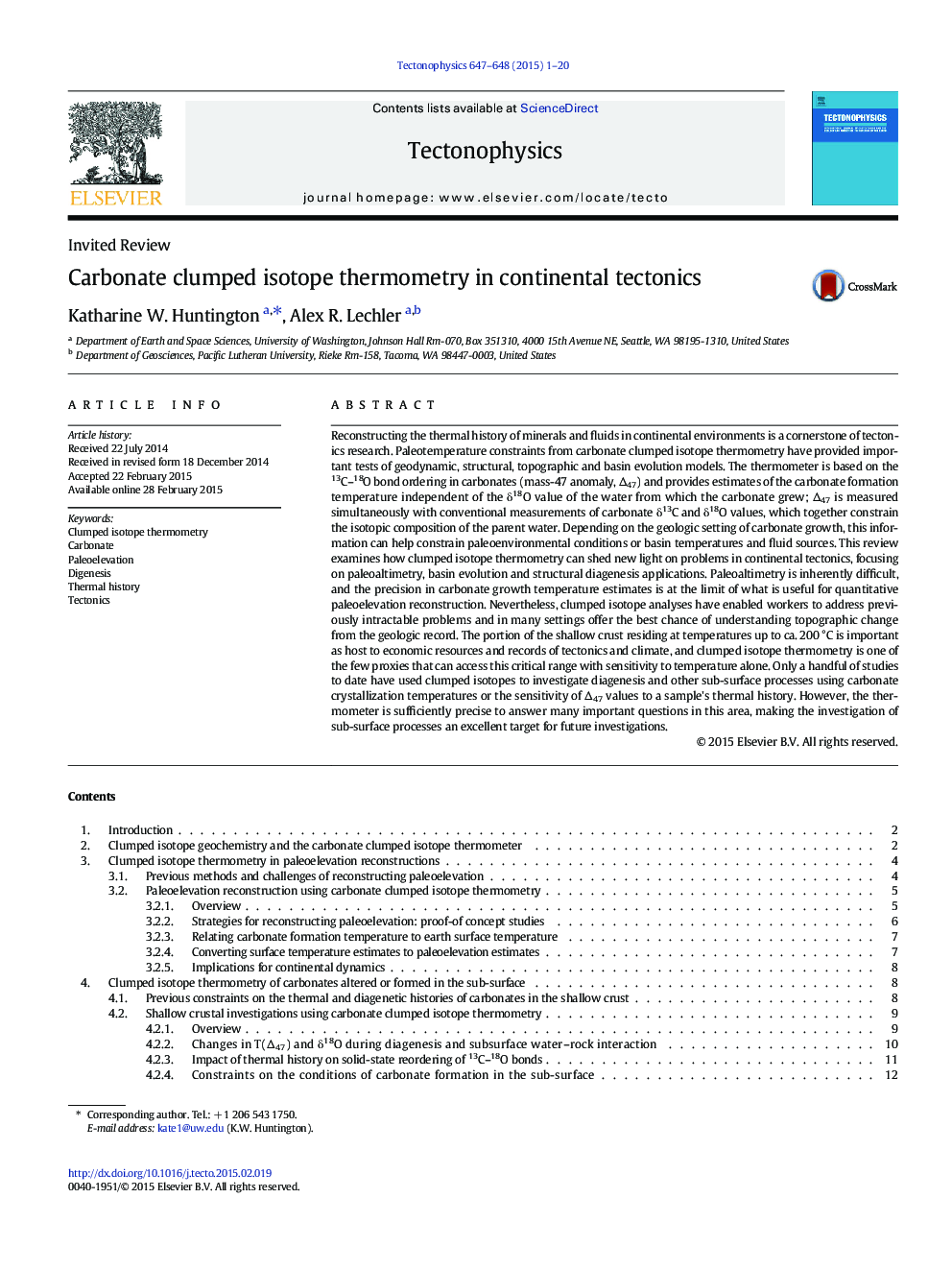| کد مقاله | کد نشریه | سال انتشار | مقاله انگلیسی | نسخه تمام متن |
|---|---|---|---|---|
| 4691687 | 1636746 | 2015 | 20 صفحه PDF | دانلود رایگان |
• Clumped isotope thermometry can shed new light on problems in continental tectonics.
• Method constrains temperature and isotopic composition of paleo-fluids.
• Can be applied to carbonates formed in earth surface and subsurface environments
• Examples focus on paleoaltimetry, basin evolution, structural geology and diagenesis.
Reconstructing the thermal history of minerals and fluids in continental environments is a cornerstone of tectonics research. Paleotemperature constraints from carbonate clumped isotope thermometry have provided important tests of geodynamic, structural, topographic and basin evolution models. The thermometer is based on the 13C–18O bond ordering in carbonates (mass-47 anomaly, Δ47) and provides estimates of the carbonate formation temperature independent of the δ18O value of the water from which the carbonate grew; Δ47 is measured simultaneously with conventional measurements of carbonate δ13C and δ18O values, which together constrain the isotopic composition of the parent water. Depending on the geologic setting of carbonate growth, this information can help constrain paleoenvironmental conditions or basin temperatures and fluid sources. This review examines how clumped isotope thermometry can shed new light on problems in continental tectonics, focusing on paleoaltimetry, basin evolution and structural diagenesis applications. Paleoaltimetry is inherently difficult, and the precision in carbonate growth temperature estimates is at the limit of what is useful for quantitative paleoelevation reconstruction. Nevertheless, clumped isotope analyses have enabled workers to address previously intractable problems and in many settings offer the best chance of understanding topographic change from the geologic record. The portion of the shallow crust residing at temperatures up to ca. 200 °C is important as host to economic resources and records of tectonics and climate, and clumped isotope thermometry is one of the few proxies that can access this critical range with sensitivity to temperature alone. Only a handful of studies to date have used clumped isotopes to investigate diagenesis and other sub-surface processes using carbonate crystallization temperatures or the sensitivity of Δ47 values to a sample's thermal history. However, the thermometer is sufficiently precise to answer many important questions in this area, making the investigation of sub-surface processes an excellent target for future investigations.
Journal: Tectonophysics - Volumes 647–648, 19 April 2015, Pages 1–20
